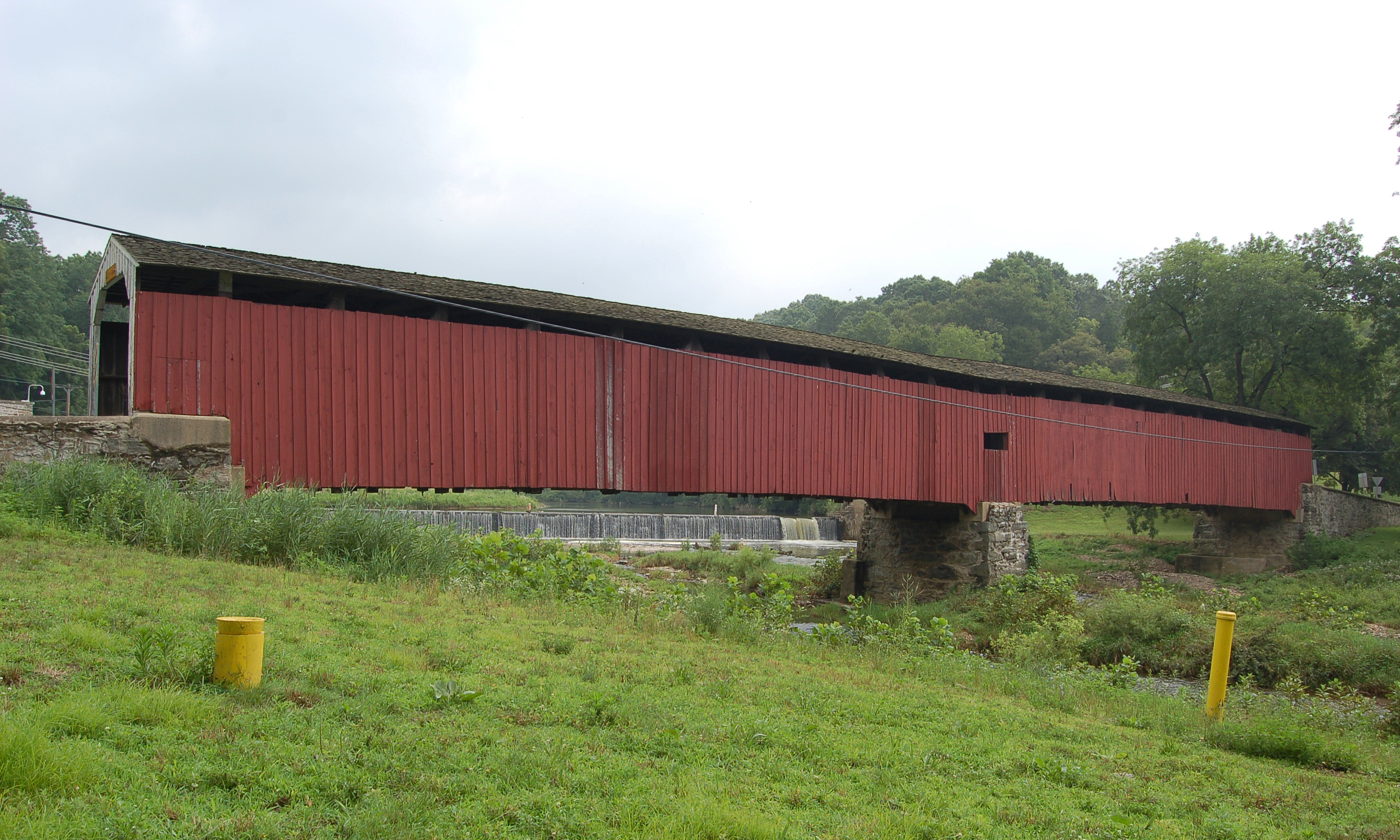Lancaster County, Warwick Township. Built 1843, rebuilt 1973. 180 ft long. Lancaster County's longest single-span covered bridge, open to traffic.

Rupert Covered Bridge
Built in 1847, this 185-foot Burr Arch bridge is the longest covered bridge in Columbia County and the fifth longest in Pennsylvania.
About Rupert Covered Bridge
Rupert Covered Bridge stands as Columbia County's longest and most impressive covered bridge at 185 feet, making it the fifth longest covered bridge in all of Pennsylvania. Built in 1847, this magnificent span crosses Fishing Creek near its confluence with the Susquehanna River and is located just outside Bloomsburg in the village of Rupert. The bridge holds a unique distinction of being directly adjacent to railroad tracks, creating a fascinating juxtaposition of 19th-century covered bridge engineering and railroad infrastructure. Rupert Bridge serves as a gateway to understanding Columbia County's rich covered bridge heritage and stands as testament to the exceptional quality of mid-19th century Pennsylvania bridge construction.
History
Constructed in 1847 by Jesse W. Beard for $1,637, Rupert Covered Bridge was named after the nearby village of Rupert, which was settled by Leonard Rupert in 1788. Leonard Rupert established a ferry crossing the Susquehanna River, and his home became a popular stopping place for travelers journeying through central Pennsylvania. The covered bridge replaced the ferry crossing Fishing Creek and became an important transportation link for the growing community. The 1840s represented the height of covered bridge construction in Pennsylvania, and this bridge demonstrates the advanced engineering capabilities of that era. The bridge has survived over 175 years of service, weathering countless floods from Fishing Creek, ice flows, and the transition from horse-drawn wagons to automobile traffic. The bridge received a creative restoration and upgrade in 2000-2001 designed by the Larson Design Group. This innovative rehabilitation preserved the bridge's historic character while ensuring its structural integrity - the original walls and roof remain self-supported while a new load-bearing modern bridge was constructed underneath. This approach has allowed the historic bridge to continue serving vehicle traffic while maintaining its authentic 1840s appearance.
Architecture
The 185-foot bridge employs a sophisticated Burr Arch Truss design, the system patented by Theodore Burr in 1817 that became Pennsylvania's dominant covered bridge design. The Burr Arch combines a massive supporting wooden arch with kingpost trusses to efficiently distribute loads across the bridge's substantial length. The engineering required for such a long span in 1847 demonstrates the advanced capabilities of Pennsylvania's master bridge builders. The bridge features hand-hewn timbers joined using traditional mortise-and-tenon joinery secured with wooden pegs - construction methods perfected through decades of Pennsylvania bridge building experience. The red weatherboard siding protects the structural timbers while creating the classic covered bridge appearance. The bridge's location directly adjacent to railroad tracks creates a unique visual and historical interest - visitors can observe the contrast between wooden covered bridge technology and iron rail infrastructure. The innovative 2000-2001 restoration preserved all original architectural elements while adding modern structural support underneath, demonstrating how historic bridges can be adapted for continued use.
Visiting
Rupert Covered Bridge is located in the village of Rupert between Bloomsburg and Montour Township, easily accessible off Route 42. As Columbia County's longest covered bridge, it offers visitors an impressive experience of traveling through one of Pennsylvania's substantial historic spans. The bridge continues to carry vehicle traffic thanks to its innovative restoration. Fishing Creek provides a scenic setting, particularly where it approaches its confluence with the Susquehanna River. The bridge's proximity to the railroad tracks adds unique visual interest and historical context about 19th-century transportation infrastructure. The village of Rupert offers historical context about early Pennsylvania settlement and river ferry operations. Photography enthusiasts will find excellent opportunities to capture the bridge's impressive length and its distinctive location beside the railroad. The bridge is particularly photogenic during spring when Fishing Creek runs high, or during autumn when surrounding trees display vibrant fall colors. Visitors should respect that this is a working bridge serving local traffic and drive carefully through the single-lane structure. The bridge is located near Bloomsburg and can easily be combined with visits to other Columbia County covered bridges, including the famous Twin Bridges and Josiah Hess Bridge which are nearby. Best visited April through November when weather permits comfortable exploration and the creek is flowing at scenic levels.
Similar Bridges in category
Lancaster County, Leacock/Paradisehttps://directify.app/app/2294/projects/10553608/edit Townships. Built 1844. 178 ft long. One of 12 double-span, double-arch covered bridges in USA, pedestrian access only.
Lancaster/Chester County Line. Built 1864. 198 ft long. Lancaster County's longest covered bridge, Civil War era construction, open to traffic.


